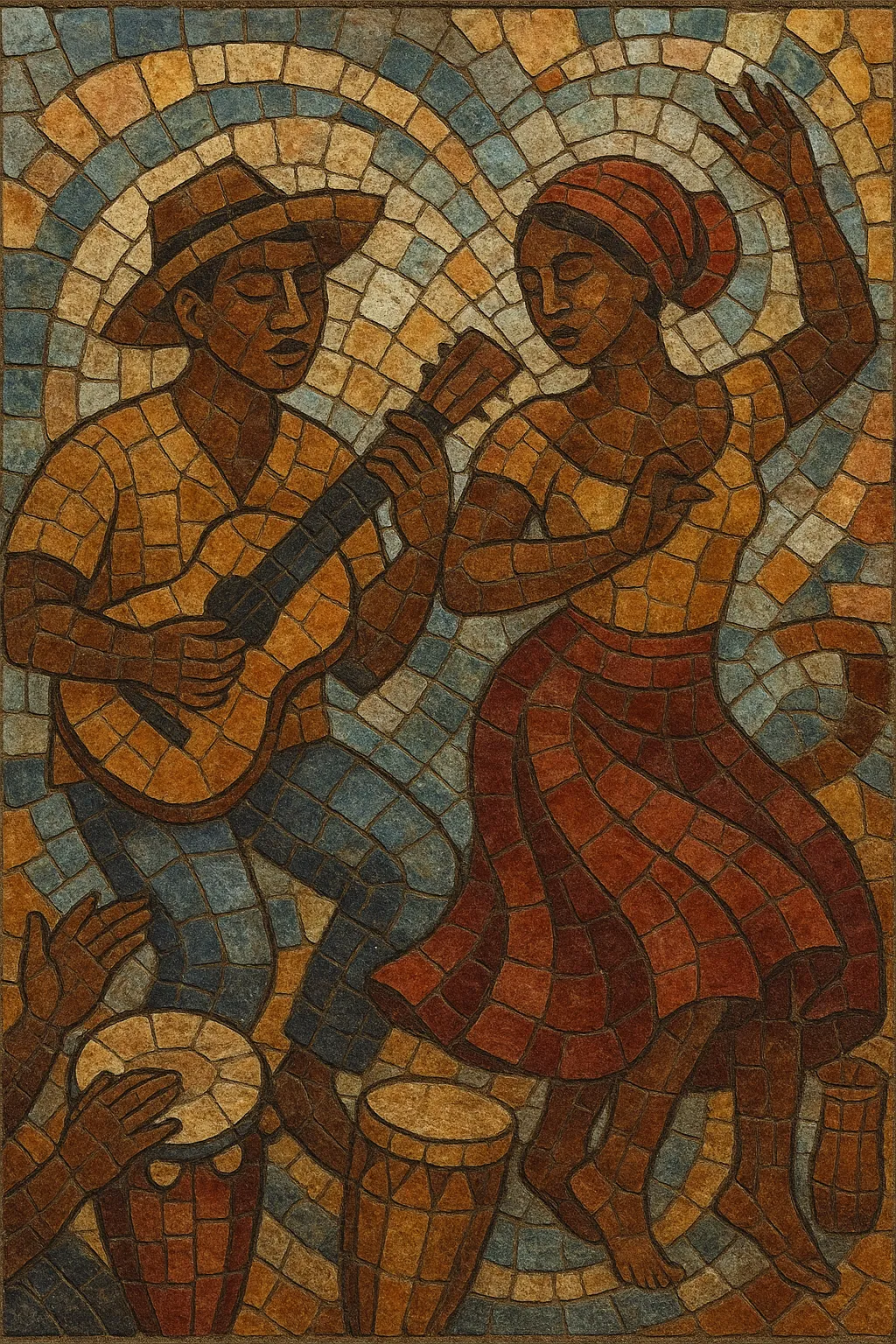Lundu is an Afro‑Brazilian dance‑song that emerged in colonial Brazil, blending Bantu‑derived rhythms with Portuguese melodic and harmonic practices. Typically set in 2/4 with marked syncopation and a swaying groove, it was both a circle dance (often featuring the playful umbigada gesture) and a sung genre accompanied by guitar and hand percussion.
In its urbanized, salon form of the late 18th and 19th centuries, lundu became a fashionable entertainment in Brazil and Portugal, sharing space with the modinha. Its music commonly features strophic verses with a recurring refrain, call‑and‑response, and light, flirtatious texts. Instrumentation ranges from voice and violão (6‑ or 7‑string guitar) or cavaquinho to pandeiro, atabaque, and handclaps.
Lundu arose in colonial Brazil during the 1700s from Afro‑Brazilian communities, drawing on Central African (especially Angolan) rhythmic and dance practices carried by enslaved people. The genre retained participatory circle‑dance elements and percussion patterns associated with batuque gatherings, while absorbing Portuguese melodic and harmonic idioms.
By the late 18th century, lundu had crossed social boundaries and entered urban salons, often paired with the modinha as "modinhas e lundus." This salonization introduced more diatonic harmony, written accompaniment for guitar and keyboard, and print circulation. In Lisbon, a cognate form (often called lundum) became fashionable, contributing to a two‑way Luso‑Brazilian exchange.
Musically, lundu centers on a lively 2/4 with persistent syncopation—frequently a 3‑3‑2 (cinquillo‑like) cell or off‑beat accent pattern—supporting strophic lyrics that are humorous, teasing, or flirtatious. The dance commonly used the umbigada as a playful cue to change partners, reinforcing its social and courtship character.
Lundu’s syncopation and dance energy fed into later urban Brazilian genres. It is a recognized ancestor of maxixe and a crucial strand in the emergence of samba (including samba de roda) and the idiomatic swing of early choro accompaniment. Across the Atlantic, its salon form interacted with Portuguese song practices that would shape early fado. In the 20th century, composers and collectors (e.g., Villa‑Lobos and modern interpreters) revisited lundu, preserving it in arrangements and recordings.
While no longer a dominant popular style, lundu survives in folkloric performance, historical recordings, and concert arrangements, and its rhythmic DNA continues to animate Brazil’s popular music.


